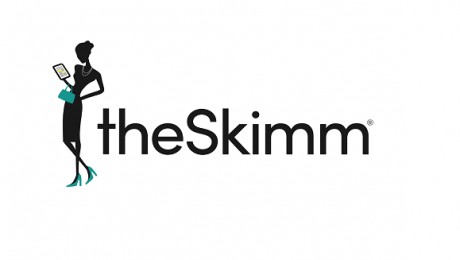theSkimm
By Ashley Snodgrass
I start my morning with theSkimm – a short email newsletter designed to get you the day’s news in less time than it takes to brush your teeth. I’ve always been a news junkie, but there are only so many hours in the day to read news stories from state, national, and international publications. theSkimm is email that arrives in your inbox each morning, bringing you the news highlights of the day to keep you educated on current events, prepping you for conversations around the office and with business associates.
I enjoy reading theSkimm because it is brief, and includes some news that I might not stumble upon typically. This is a great tool for busy professionals that like to start each day by knowing what in the world is going on in the world.
Check out a recent edition of theSkimm here:
- Published in Blog
Stress, There’s Not Room in This Moment for the Both of Us
By Alesha Combs
You may have experienced the bittersweet nature of the holiday season. It’s a time for celebrating, socializing, parties and great food, but the stress that some of these events bring on can catch you off guard. Maybe you encounter a first holiday without a loved one, or feel overwhelmed with the thought of hosting Thanksgiving dinner or picking the perfect gift.
If you work in health insurance, you know that the holiday season also comes during the infamous “4th Quarter,” our busiest, and I’ll be honest, most stressful time of year. 4th Quarter is when the majority of health plans renew, and new plan options are rolled out. It comes with an influx of meetings, paperwork, and more emails than you can count. Stress runs high.
It is a bit ironic that while we work to secure people’s access to healthcare and secure their wellness, it comes with an increase in stress, which does the exact opposite! I don’t think this is news to most people, but stress can cause a significant impact on your body and overall wellness. Symptoms of stress include: headaches, muscle tension, chest pain, sleep challenges, social withdrawal, anxiety and irritability. (Mayo Clinic; Stress Symptoms: Effects on Your Body and Behavior).
For many people, the idea of self-care and stress management, while a nice concept, may seem unrealistic or unattainable, in the vein of “Life is too busy, and there’s no time to relax!” but using the technique, tools, and processes of mindfulness can help reduce stress, and, bonus, it doesn’t take time! Mindfulness is a psychological shift that focuses on remaining present in the moment. This can be achieved by focusing in on and acknowledging the sensations you are experiencing in the present moment. While there may not be time, there is always the present.
So the next time you’re sending an email, try a few of the following methods for staying mindful and present: focus on the feel of the keys under your fingers, the sensation of moving each finger to coordinate a whole series of movements all resulting in your email. Listen to the sound of the taps on the keyboard. Is there a pattern? Is it urgent or steady? You’ll find yourself pulling away from the spinning thoughts of the day and focusing on the now and the task at hand.
The truth is that most often the present moment is not that stressful. It’s the regrets of the past, or pressures of the future, that cause the mind to spiral. When you mindfully focus in on the moment, it empowers you to take control of it, and results in feeling less stressed and more productive.
If you are interested in practicing mindfulness, but would like some help getting into the swing of it, I recommend the book “How to be Mindful” by Anna Barnes. It shares useful tips and reminders on every page. It is not written in a novel or story format, so it takes almost no time at all to familiarize yourself with the tools needed to practice this psychological shift; shifting yourself back into the moment and kicking stress out.
- Published in Blog
Workers Compensation Rates in Alaska Coming Down in 2019
By Tim Maudsley
Alaskan businesses will receive a welcome drop in workers’ compensation rates for 2019, based on the expected approval by the Alaska Division of Insurance, which will go into effect on January 1, 2019. If approved, this will be the largest single reduction of rates seen in Alaska in the past 40 years. The 2019 rate reductions follow 2018 rates that fell 5.4 percent from 2017. Alaska has reduced rates by approximately 25 percent since 2015, thanks to continuing declines in claim frequency and favorable medical cost trends.
According to the State of Alaska, “the Division of Insurance is responsible for determining whether the reduced rates proposed by the National Council on Compensation Insurance (the organization in charge of filing workers’ compensation insurance rates in Alaska) are adequate. If approved, the new workers’ compensation rates will go into effect in January.”
“These proposed rate reductions are welcome news for Alaska businesses — lower workers’ compensation costs reduce the burden on the small businesses that strengthen our economy,” said Governor Bill Walker, who thanked “the Alaska State Legislature and the Department of Labor and Workforce Development for their work on payment reform, contributing to significant rate reductions for 2019.”
Alaska Daily News reported that, following approval by the Legislature in 2014, the Alaska Workers’ Compensation Board approved new practices and fee structures for paying medical providers for procedures paid for through workers’ compensation insurance in October 2015. The fee structure changes put provider reimbursement rates more in-line with general group health insurance rates, according to Workers’ Compensation Director Marie Marx. It replaced a system of paying medical service providers at the 90th percentile of “usual and customary” fees in a given region.
RISQ Consulting recommends looking at your current workers’ compensation placement, and review whether you are receiving the proper level of service from your insurer and risk management team. Given the market changes, now would be an optimal time to explore options available in the marketplace to improve your level of service as well as reduce your premiums.
For reference:
https://gov.alaska.gov/newsroom/2018/10/alaska-workers-compensation-rates-to-decrease-in-2019/
- Published in Blog
Work – Life Balance: Are You Teetering or Succeeding? Tips to Achieve This Illusive Proposition.
By Aimee Johnson
The average American works on average 47 hours per week; with many people saying they work 50 hours per week, that’s almost a third of our time being spent with our work families! I sure hope you like yours!
It’s easy to see why the discussion of work-life balance is increasingly more relevant and an important value to modern day working Americans. Who wouldn’t want more time with our families, friends, and ourselves to pursue our interests?
Here are a few tips that may help you achieve a greater work-life balance:
- SET YOUR PRIORITIES – Figure out what you want your priorities to be, not what you think they should be. Ask yourself, “If I could only focus on one thing in my life, what would it be?” What would you focus on second? Third? Fourth? Fifth? You’ve now identified your top five priorities.
- SCHEDULE ONE THING YOU LOOK FORWARD TO EACH DAY – Book some time to play tennis with a friend, go to an art museum, or have a massage. The activity doesn’t have to be time-consuming, complicated, or expensive. Put aside an hour on your schedule to read a book, take a walk, or just to be alone.
- LEARN YOUR EMPLOYER’S POLICIES – Inquire about your company’s policies on flextime and working from home. If you’re a strong performer, you have a better chance of negotiating an arrangement that works for both you and your employer.
- COMMUNICATE – If you won’t be available for certain hours during the day or the weekend because you’re dealing with family issues, let your manager and colleagues know and get their full support.
- USE TECHNOLOGY TO YOUR ADVANTAGE – Technology should help make your life easier, not control it. Ban technology at certain times so that you can focus on your family or friends.
- TELECOMMUTE – Telecommuting a few times a week could help free up valuable hours. You’ll be able to focus on work for long stretches at a time and use the extra hours to meet personal responsibilities.
- LEARN TO SAY NO – Remember that you can respectfully decline offers to run the PTA or serve on an extra committee at work. When you stop doing things out of guilt, you’ll find more time to focus on the activities that truly bring you joy.
- FIGHT THE GUILT – Superwoman and Superman are fictional characters. Real people can’t devote 100% to everything they do. Stop feeling guilty if you miss an occasional soccer game or bail on a colleague’s going-away party.
- RETHINK YOUR IDEA OF “CLEAN” – Unmade beds or dusty moldings are not signs of failure. Try to get used to a little messiness and spend more time enjoying your life. If you can afford to outsource help, pay someone else to clean your house.
- PROTECT YOUR PRIVATE TIME – Allow yourself to daydream or appreciate good weather on your walk to work. If you don’t allow yourself pockets of personal time, you’ll become too burned out to fully appreciate any part of your life.
Balance is Beautiful – Achieving balance in both your work and personal lives allows you to perform optimally in both.
Happy Balancing!
- Published in Blog
32-Hour Work Week – Eye-Roll or Intriguing Concept?
By Aimee Johnson
Work-life balance is an ever-increasing topic of discussion and frustration. With five generations and seven values currently in the workplace today, how do you keep all of these employees happy?
As the workforce continues to change, are you an employer that believes in the traditional way of doing things – keep your head down, do what your told, clock-in, clock-out, work your 9am-5pm, 40-60 hours per week, and collect your paycheck or do you prefer more a blurred lines method that may not be the same approach for all?
One employer explores a 32-hour workweek strategy. Would this work for you and your business?
Here were some of the experiment’s results:
- A 24% increase in home-work balance
- Employees returned to work more energized
- The staff was reported to be more creative
- Attendance was better
- Employees were punctual
- Employees did not leave early or take breaks
Maybe we all should take a second look at how we are doing business and managing our employees.
- Published in Blog
Construction Coverage
By Tim Maudsley
The construction industry is much more complex than drywall here, hammer there, paint this. It’s a complicated equation of materials, time, and funding. That’s why construction insurance is equally complex.
Few people are familiar with “delay in start-up,” which, in its simplest interpretation, is a time element construction coverage to insure against potential loss of earning following a delay. Delay in start-up coverage for the construction market is one that is essentially needed yet widely confused by insurers and risk managers alike. With employment growth and improved construction spending, understanding nuanced options like delay in startup becomes increasingly more important. I would highly suggest reading this article from Insurance Journal explaining how, without this coverage, contractors risk being exposed to cash flow challenges that could otherwise be insured.
- Published in Blog
The Way We Work is Changing, are You Prepared?
By Andrew Kupperman, SHRM-CP
Picture this: the business you work for provides you with a tool that allows you to do anything and everything you need from a single interface. This tool is similar to HAL 9000 from “2001: A Space Odyssey,” but without the malfunctions and antagonism that would lead to your entire team’s demise. Let’s call our tool WIT (Work Information Tool).
WIT is similar to Siri or Alexa that we already have a technical familiarity with from our personal lives. It can answer questions you might have as an employee, such as those pertaining to your benefits, the tasks you need to complete, or your net pay last period. WIT can also provide you with meaningful statistics and analyzations regarding your performance and provide suggestions on trainings to improve productivity. Automating repetitive tasks is even something WIT can help with, such as sending template emails to clients. And, like Siri and Alexa, there are going to be times WIT can’t directly help, but it will at least be able to get you in contact with the right person with the click of a button.
Now you may be thinking, WIT would be a revolutionary tool and a game changer for many businesses in terms of freeing up their employees and resources to focus on the things that actually grow the bottom line. You might also be asking when will WIT be available for the masses and how much will it cost? The answer to these questions is sooner than you think, and not cheap. Technology like this already exists in its early stages within the Enterprise segment of business, but it takes a lot of time and energy to build this type of tool in an effective and impactful way, making it a tough investment to rationalize for small businesses.
The first iPhone came out in 2007, a mere 11 years ago. If you think about how much technology has progressed since then, then it’s not out of the realm of possibility that a tool like WIT could be purchased and implemented at a reasonable cost within the next 5-10 years for all types of businesses. So what does this mean for businesses today? It’s tough to say based on the industry you’re in, but one thing is certain – you can’t just ignore it.
As newer generations and mindsets enter the workforce, they are going to expect their work experience to echo their personal life. Business leaders need to figure out how to provide this kind of work experience in order to get the most out of these employees. This type of technology is important to that, but it’s not the key. The business itself needs to alter its mindset to be able to adapt to and accommodate change. Areas that have traditionally been the “back bone” for more administrative tasks of a business, such as HR, IT, and Finance, will need to take on a more strategic role to support the workforce in understanding how this technology can help them focus on living their best work life. Direct supervisors will also need to understand their role in leading by example by being the stakeholder in change for the staff they lead.
Technology like WIT sounds amazing, but it’s not quite here yet for the masses. So what does a business need to do to prepare? First, talk to your leaders about the change that is coming. Have honest conversations and develop a flexible strategy about how the business will adapt to any change it might encounter. Discuss the expectations for each business unit in order to make that change a success. If your leaders understand and have a say in this, they will be more likely to buy-in to the change and better equipped to help the rest of the business adapt.
Lastly, make sure you understand what your workforce is looking for in their work experience. You never know what kind of innovative ideas already exist in the minds of the people that keep your business running strong, until you give them a voice. Remember, a tool like WIT isn’t innovation in of itself. People drive the true innovation, so make sure they are equipped to handle the change that is coming.
- Published in Blog
Tips For Being an Informed Health Care Consumer
By Tiffany Stock
I really struggled with this post, trying to figure out what I could write about that would benefit you, our readers, but also be something I felt passionately about that we haven’t already posted. Then the light bulb came on – every day I talk with people about the best way to utilize their health insurance, the questions to ask, things to look out for so you can avoid unexpected charges and surprise bills from doctors and hospitals. And then I thought what about all the people I don’t talk to, such as those who don’t call or email me asking for advice prior to scheduling a surgery or procedure. So I decided to create a list of some common things to be aware of in hopes that it may benefit you in a future event. The reality is, I talk to consumers daily and try to spread awareness in this area, but research has shown that most people only remember 50% of a 10-minute presentation, and the next day that decreases to 25%, so highlighting this information in particular seemed valuable. For someone who isn’t “in” the health insurance world daily like myself and my colleagues, it can be difficult to navigate, know the right questions to ask, etc. So here is my attempt to give you a few helpful tips:
- Don’t be afraid to ask questions!
- It’s your health and, at the end of the day, you are ultimately responsible for any services rendered by a physician or facility regardless of whether you have health insurance. Don’t be afraid to ask for a quote – if you are in Anchorage, there is a Municipality Ordinance that requires compliance. Many states have similar requirements, so it’s worth asking wherever you go.
- Ask for the procedure codes (CPT) for whatever you need to have done. With that information, you can call your insurance company and verify if it’s a covered procedure. At the same time, if you have a price quote you can also ask if the charge is within the allowed amount set by your health insurance carrier and verify if the provider is in-network.
- If you are having a surgery, be sure to ask WHO will be present in the surgical room? Who will be billing you and your insurance for their services? This is hugely important – a lot of insurance carriers do not cover assistant surgeons, so that’s an area to watch out for. Also, if you will have an anesthesiologist present, you’ll want to be able to confirm that they too, are in-network with your health insurance carrier. I’ve seen a lot of people end up with out-of-network bills because their doctor and facility were in-network but the anesthesiologist was not.
- If your plan operates under a Preferred Provider Organization (PPO) arrangement, requiring you to use in-network facilities and providers to get the best overall benefit, this also applies to labs, imaging, prescriptions, and medical equipment. This last one is particularly important – if you are receiving a piece of medical equipment in a provider’s office setting, be sure to ask who will be billing you for that equipment. If it’s not an in-network doctor or facility, be sure to check if the medical equipment supply company is in-network as well – I myself ended up with $500 of out-of-network charges for a walking boot that was received in my in-network doctor’s office, but the supplier who billed for it was not in-network.
- Do your own research!
- If you need imaging (x-ray, CT Scan, PT Scan, etc.) done, it’s definitely worth shopping around. Prices vary amongst facility even when they are all in-network. Most imaging charges are subject to your deductible and coinsurance, so this affects the out of pocket dollars you spend. It can save you hundreds of dollars (I’ve even seen disparities for the same imaging of over $1,000) for the same service from facilities within miles of each other.
- Prescription Coverage
- I could write a whole post on prescription coverage, I’ll keep it short. In a recent study from CMS, data through 2016 suggests that prescription drug costs account for about 10% of all healthcare spending and that number is only expected to rise. Don’t be afraid to shop around for your prescriptions. The same exact prescriptions at different pharmacies and even the same chain but different locations can vary. This is especially important if you have a high deductible health plan (HDHP) that requires you to pay the retail cost of prescriptions until your deductible is met – every dollar counts! Even if you pay flat copays for your prescriptions, this is important in an effort to help keep healthcare spend in control – you may only pay $10 for that generic drug, but your health plan is paying the rest and every dollar spent effects the overall premiums that are paid for your plan each year.
These tips are not all inclusive, and I could probably go on-and-on, but at least this gives you a start. Be sure to know your resources, who can you call for questions on your health plan – use them before you seek care! This is how our office tries to help our clients every day. It is a lot easier to be proactive in these situations then it is to try and fix it after the fact.
- Published in Blog
How to Be Indispensable While Suffering Under the Crushing Weight of Expectation
By Jennifer Outcelt
Warning: The following blog post is ripe with satire and sarcasm. The opinions expressed in this blog belong to the author and should not be read by anyone.
It’s a good feeling to be needed. Not only does it feel good, some people NEED to be needed. One could even argue that the need to be needed needs to be added to Maslow’s Hierarchy of Needs. Pay attention, I NEED you to follow me on this.
OK, OK, I need to cut all this word play and get to the point. No matter how much being needed drives you, let’s agree that becoming needed at work is definitely a good thing when it comes to job security. I’m talking about becoming indispensable, niche, a defender against all hell breaking loose, and someone without whom your company would suffer. When you’re indispensable, you’re the one who can do the things that no one else can do.
I recommend that all employees should aim to become indispensable in some form in their workplace. If not for all the benefits it brings to their employers, then at least for all the adoration, sense of superiority, praise, and gloating rights it may afford. “But how, Jennifer!? How do I become this glowing beacon of indispensable workplace behavior?” I’m glad you asked! Here is a short example of one way to start your journey of indispensability. It’s quite simple.
Step 1: Get a job.
Step 2: Crush it!
Step 3: Find a weakness in the company and exploit it. (Translation: Find an area of improvement and implement a new system that only you know how to use and, since it is working so well to solve the problem, no one questions it but eventually you go on vacation and they have to keep the system running and realize they have no idea how to keep it functioning to solve their long forgotten issue and come to the conclusion that you can never ever, ever, leave again and, if you do, you feel a massive heavy weight of guilt.)
Step 4: Stage a takeover of a particular skill and monopolize it. (Translation: Find something fun that you like to do that has some cool application at your work and convince the powers that be to let you make it an integral part of the client experience and wait until it becomes a standard then wallow in regret as your passion slowly turns into your bane as their expectation for more and more of your special talent turns its joyful creation into a deadlined demand in volumes that you can barely sustain in tandem with your real job duties)
Becoming indispensable is a super power really, but, as the cliché goes, with great power comes a giant pain in the tookus. Maybe that’s not really how the saying goes, but this is my blog post and I’ll write my own reality!
But in ALL reality (not just my own) being needed to the point that you become indispensable at work is a great honor. I consider every person I share 40 hours a week with to be indispensable mainly because I couldn’t do their job, and mine would certainly be much harder if they didn’t do it either. When it comes down to it, we are all needed to make the machine work. But, sometimes, in the process of trying to become the most important cog, you realize that you are expected to do much more than you originally intended. That expectation can seem overwhelming and at times makes you wish you stayed crouched in the corner sharpening pencils and doing the bare minimum. Luckily, for most of us, the drive to be needed and make a difference beats out any desire to be lazy, and thank goodness! Otherwise, nothing would ever get done. Oh, and here is one more step to get you on your way.
Step 5: Always stay positive and continue to show up to work with a smile. (Translation: Get out of bed and make this day better than the last because that day is already gone and you know that no matter how many poopy days you have they still hardly compare to the number of great productive days that you have and this job is totally worth it because the people you work with are truly supportive and looking out for each other and if they depend on you it’s because they trust you and if not for all the gushy stuff you just remembered you also know that no one is truly indispensable because in the workforce everyone is replaceable.)
- Published in Blog










